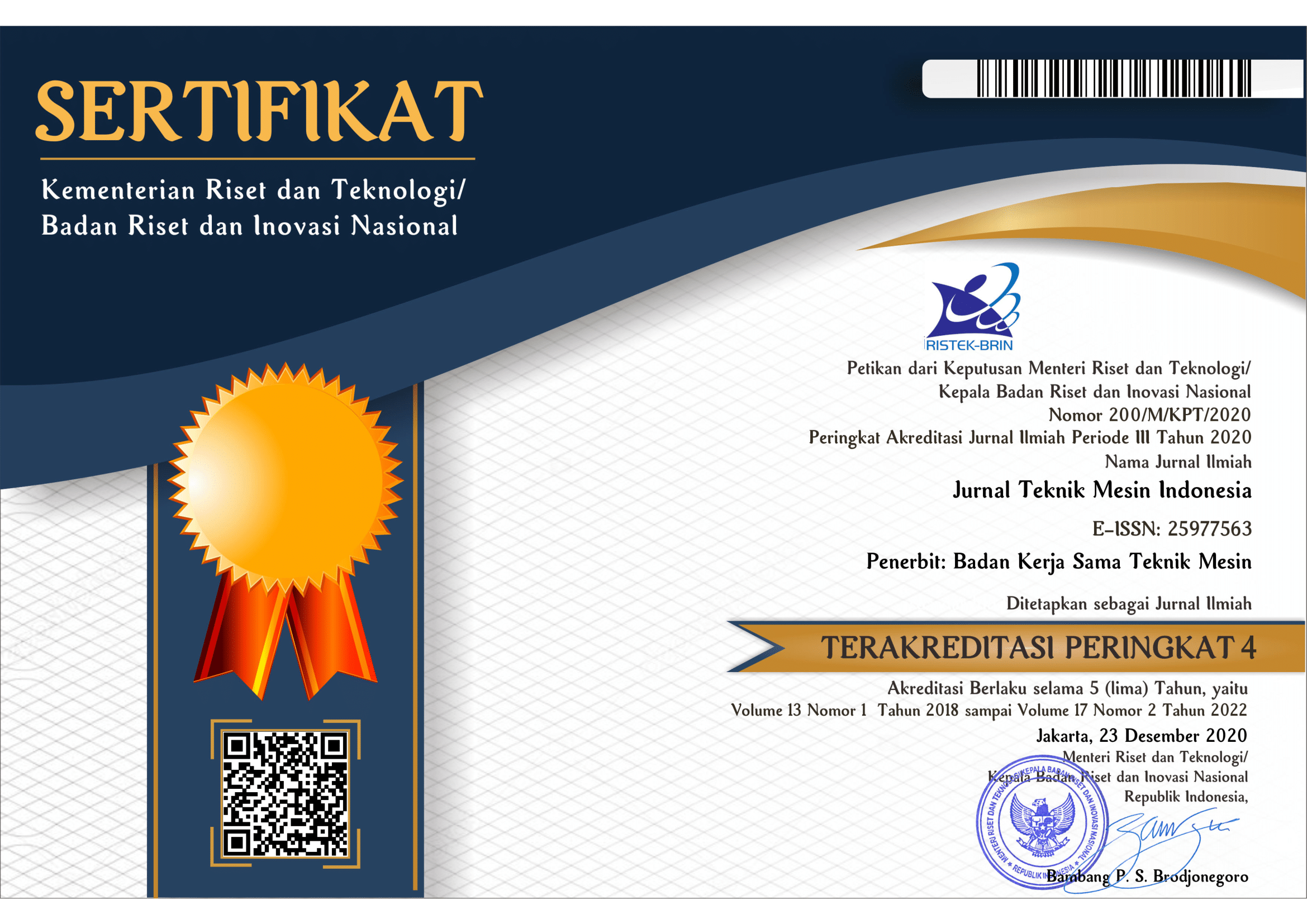Pemanfaatan limbah bunga pinus menjadi bio-oil dengan penambahan variasi konsentrasi katalis Mo/lempung menggunakan metode pirolisis
DOI:
https://doi.org/10.36289/jtmi.v18i2.481Keywords:
pine flower waste, bio-oil, Mo/clay catalyst, pyrolysis, physical characteristicsAbstract
In the modern era, the high energy consumption associated with technological advancements poses a potential energy crisis due to the finite nature of fossil fuel resources. One explored solution is the utilization of renewable energy through biomass conversion. This study aims to convert pine flower waste into bio-oil via pyrolysis with the assistance of Mo/clay catalysts, to investigate the effect of Mo/clay catalyst addition on the resulting bio-oil yield, and to analyze the physical characteristics of the pyrolyzed pine flower waste bio-oil in comparison with conventional diesel fuel. Various catalyst concentrations 0% (without catalyst), 7%, 9%, and 11% with Mo loading of 1% of the catalyst mass, were employed. Pyrolysis was conducted at a temperature of 320°C for 120 minutes under oxygen-free conditions, followed by distillation to remove water content from the bio-oil. The results of the study demonstrate that the addition of Mo/clay catalyst positively influences the bio-oil yield and its physical characteristics. The optimal results were achieved at a catalyst concentration of 9%, resulting in a density of 1.008 g/ml, viscosity of 49.603 cSt, and calorific value of 8,266.4981 cal/g. However, the pine flower waste-derived bio-oil has yet to be directly employed as a substitute for conventional diesel fuel.










